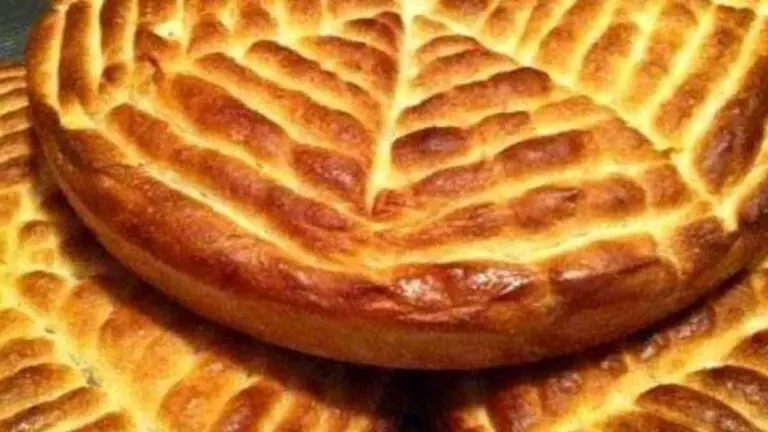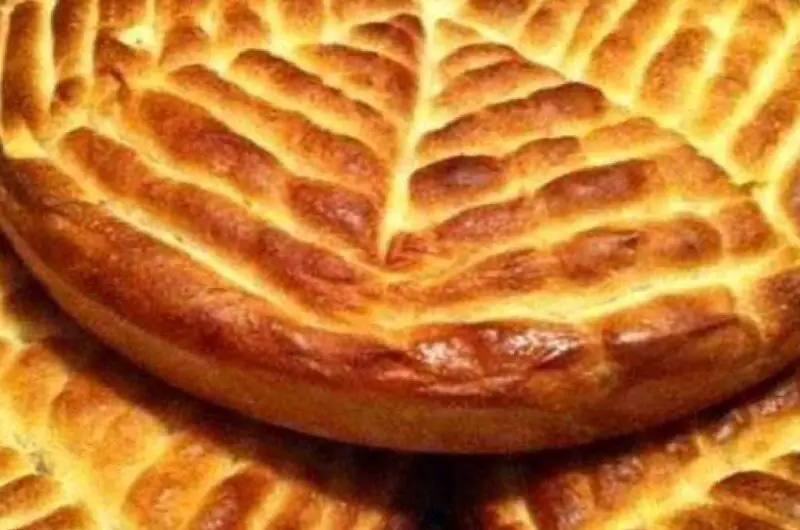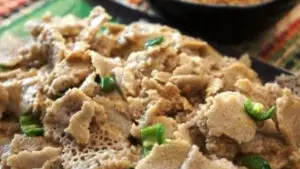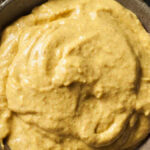Affiliate Disclaimer: As an affiliate, we get commissions for purchases made through links on this website from Amazon and other third parties.
Ambasha is on of Ethiopia’s most popular breads that is frequently made for holidays like Christmas as well as other noteworthy events and festivities. It can, however, also make a fantastic snack or even breakfast. A typical Ambasha has cardamom, raisins, and black sesame seeds as flavorings, making it a pleasantly sweet and savory bread.
Compared to other Ethiopian breads, Ambasha is quite simple to make. The five standard ingredients for Ambasha bread are flour, sugar, water, yeast, and salt.
In order to create an elastic and uniform dough, the ingredients are combined before gradually adding water. During the kneading process, some fat is added to the dough along with the cardamom and other seeds. This may be Niter Kibbeh (Ethiopian clarified butter), olive oil, or neutral vegetable oil.
The Ambasha is adorned by scoring with a knife after rising a second time, immediately before being brushed and then placed in the oven. The style of decoration varies, but generally speaking, it takes the form of a wheel with grooves placed in a way to produce rays.
Ambasha can be prepared in a pan or an oven.
Ingredients Required to Make Ambasha
- 6 cups of wheat flour
- 1.5 tbsp of active dry yeast
- 2 tsp of powdered Korerima (Ethiopian Cardamom)
- 0.35 cup sugar
- 0.5 cup Niter Kibbeh (Ethiopian clarified butter)
- 2 tbsp of Tikur Azmud (Nijella Seeds)
- 2 cups of water (lukewarm)
- 1 tbsp of Salt
For Brushing
- 3 tbsp of milk
- 3 tbsp of Niter Kibbeh (Ethiopian clarified butter)
Equipment Required to Make Ambasha
- Stand Mixer with Pouring Shield (View Recommendation)
- Bowls & Measuring Cups Set (View Recommendation)
- Non-Stick Circular Baking Pan Set (View Recommendation)
- Electric Wall Oven (View Recommendation)
- Bread Knife (View Recommendation)
- Pastry Brush (View Recommendation)
- Injera Mitad / Electric Griddle (View Recommendation)
How to Make Ambasha (Step-by-Step Tutorial)
- Start by adding the wheat flour, Tikur Azmud, powdered Korerima, and sugar into a stand mixer and mix them all together thoroughly.
- Dig an opening in the center of the mixture, add the dry yeast along with a cup of lukewarm water, and mix them together as well. Then let the mixture sit for about 15 min.
- Then, add the Niter Kibbeh and continue mixing at low to medium speed while adding the remaing water slowly until you get a consistently soft dough. Then add the salt and continue mixing for about 5 min. at medium speed.
- Transfer the dough onto a work surface that has been lightly floured, cover using clean sheet of cloth, and place in a warm draft-free area for about 90 min. for the first rise.
- Next, divide the dough into 2 equal pieces and roll them into a circle shape of about 12 inches in diameter, each.
- Place each dough in a circular baking pan, cover using a clean sheet of cloth again, and let them sit in a warm draft-free area for about 10 min. again for the second rise.
- In the mean time, preheat your oven to 175°C (350°F).
- Before backing the 2 Ambasha breads, mark around 5 concentric circles on each dough using a knife, starting from the center and moving to the edge.
- Then start making cuts across dough from one edge to the other passing through the center, just like when cutting pizza. In the end, you should have decorative patterns that resemble a wheel pattern.
- Next, mix the milk and Niter Kibbeh set aside for brushing in a separate bowl, mix them well, and brush both doughs.
- Finally, bake the doughs for about 30 min. each, until they are thoroughly cooked and get a golden-brown.









